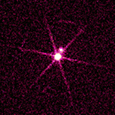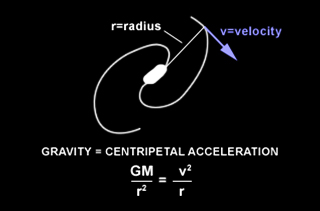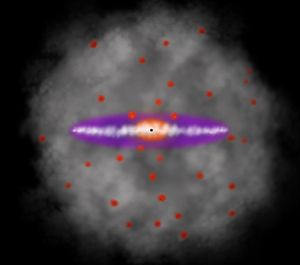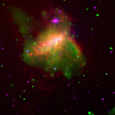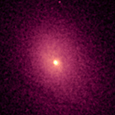"Eliminate all other factors, and the one which remains must be the truth." Sherlock Holmes in The Sign of the Four, by Arthur Conan Doyle.
The type of detective work described by Sherlock Holmes has been used by astronomers for a long time to deepen our understanding of the universe. Ever since the phenomenal success of Isaac Newton in explaining the motion of the planets with his theory of gravity and laws of motion in 1687, unseen matter has been invoked to explain puzzling observations of cosmic bodies.
For example, the anomalous motion of Uranus led astronomers to suggest that an unseen planet existed, and a few years later, in 1846, Neptune was discovered. This procedure is still the primary method used to discover planets orbiting stars.
A similar line of reasoning led to the detection in 1862, of the faint white dwarf Sirius B in orbit around the bright star Sirius.
In contrast, the attempt to explain the anomalies in the motion of Mercury as due to the existence of a new planet, called Vulcan, did not succeed. The solution turned out to be Einstein's theory of general of relativity, which modified Newton's theory.
Today, astronomers are faced with a similar, though much more severe, problem. Unlike the case of Uranus, where the gravity of Neptune adds a fraction of a percent to the gravitational force acting of Uranus, the extra force needed in the cases described below is several hundred percent! It is no exaggeration to say that solving the dark matter problem will require a profound change in our understanding of the universe.
Below we give evidence for the existence of dark matter. The possibility that these observations can be explained by changing the theory of gravity is discussed in a separate section (Alternatives to Dark Matter).
Rotation speed of spiral galaxies.Measuring the acceleration of matter orbiting an object is the basic method for determining the mass of that object. For example, by measuring the centripetal acceleration of a planet orbiting the sun at a known distance, the mass that the sun must have to produce that acceleration can be determined.
In a similar way, astronomers can calculate the mass of a galaxy by measuring the acceleration of clouds orbiting on the outer edges of a galaxy. Pioneering work by Vera Rubin and her colleagues showed that, much to their surprise, the required mass of many spiral galaxies is much larger than the observed mass of all the visible stars and gas. About 5 times larger!
Many subsequent studies confirmed this discovery, and the general picture that has emerged is that of a disk of stars and gas embedded in a large, spherical halo of dark matter.
Hot Gas in Elliptical GalaxiesLarge elliptical galaxies have extended atmospheres of hot gas which appear to be in equilibrium. The pressure of the hot gas is balanced with the gravitational pull of all the mass in a galaxy. Chandra and other X-ray telescopes can be used to measure the hot gas pressure, and observations with optical telescopes can be used to determine the mass of the stars.
The conclusion: there is not enough mass in the stars and gas to provide the necessary gravity. Elliptical galaxies must contain about five times as much mass in dark matter as the amount present in stars and gas.
Random Motions of Stars in Dwarf GalaxiesDwarf galaxies are faint, inconspicuous systems with only a few million stars, but they may ultimately play a key role in understanding dark matter. Measurements of the random motions of stars in nearby dwarf galaxies show that these galaxies may require a much larger fraction of dark matter than normal galaxies. They may be the best places to search for X-rays or gamma-rays which could result from the decay or annihilation of dark matter particles.
Hot Gas in Clusters of GalaxiesThe first indication of the scope of the dark matter problem came from a 1933 study by Fritz Zwicky of the speed of the random motions of galaxies in the Coma cluster of galaxies. He found that 10 to 100 times more matter than could be detected in stars was needed to keep the galaxy cluster from flying apart.
One possibility was that the so-called "missing matter" was in the form of hot gas undetectable with optical telescopes. Indeed, in the last two decades, X-ray telescopes have discovered vast clouds of multimillion degree gas in clusters of galaxies. These hot gas clouds increase the mass of the cluster, but not enough to solve the mystery.
To the contrary, the hot gas in clusters of galaxies provides an independent confirmation of dark matter. As with giant elliptical galaxies, the measurement of the hot gas pressure in galaxy clusters shows that there must be about 5-6 times as much dark matter as all the stars and gas we observe, or the hot gas in the cluster would escape.





